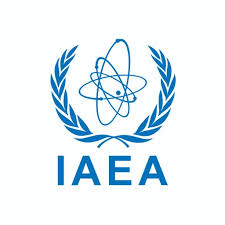IAEA launches new e-learning course to help increase use of research reactors
Despite the broad utility of these techniques, it has been recently observed that the retirement of experienced staff at research reactors can threaten the future accessibility of both NAA and neutron imaging techniques.

From the analysis and testing of industrial materials to the production of radioisotopes, the global fleet of 235 research reactors across 53 countries is routinely leveraged by experts to exhibit scientific principles to students, produce life-saving medicines, propel our understanding of the environment and to develop advanced materials. However, studies demonstrate that many reactors are not sufficiently used, and their full potential remains untapped.
To help increase the use of research reactors, and to preserve the skills of an ageing workforce, the IAEA has launched a new e-learning course aimed at young specialists, technicians and analysts on neutron imaging, a non-destructive technique for analysing the structure of a sample, which is applied using a research reactor.
“Many research reactors, mainly in developing countries, were built in the 1960 and 1970s, with the idea of showing the potential of the peaceful uses [of nuclear science], such as energy or neutron beam-based applications,” explained Nikolay Kardjilov, a Neutron Tomography Beamline Scientist at the Helmholtz-Zentrum Berlin (HZB) who helped to develop the e-learning course. “The generation of scientists and operators who helped to establish these reactors, however, is approaching their retirement age and, due to the lack of continuing investments in infrastructure and equipment, it has been difficult to build a living, scientific user community around these facilities.”
Through capacity building and expert review missions, the IAEA supports countries in their assessment and maintenance of research reactors, counteracting both their physical ageing and obsolescence. However, there exists a corresponding need to plan for and respond to, the retirement and departure of the industry’s ageing workforce.
Alongside education and training, isotope production for nuclear medicine applications and neutron activation analysis (NAA), neutron imaging is among the most common applications of research reactors.
Despite the broad utility of these techniques, it has been recently observed that the retirement of experienced staff at research reactors can threaten the future accessibility of both NAA and neutron imaging techniques. As older staff depart and new recruits arrive, gaps in methodological knowledge begin to emerge and the services offered by research reactor experts reduce in breadth and accessibility.
“The design and installation of state-of-the-art neutron imaging instruments require specific know-how and expertise in order to get the best possible performance from the available source properties and space restrictions,” said Eberhard Lehmann, an international expert and former President of the International Society for Neutron Radiology, who worked alongside Mr Kardjilov and IAEA specialists to develop the online course.
IAEA experts and international specialists developed the nine-module e-learning course through the Agency’s technical cooperation (TC) programme[1], which clarifies the broad applicability of neutron imaging, from the fundamental principles which govern its use to new and emerging experimental techniques. Trainees and young specialists enrolled in the course will learn how to process and interpret nuclear imaging data and will complete the curriculum with an enhanced understanding of when, where and how nuclear imaging should be deployed.
“In the e-learning course, all aspects in the field, like instrumentation, methods, image processing, applications and quantification, are covered, and the potential of upcoming, new methods is demonstrated,” said Lehmann. “Therefore, the course can be used as an introduction into the field, on the one side, but also as a guideline for advanced operators and users aiming to improve their performance and capabilities.”
Each module of the nine-part course concludes with a short quiz, designed for self-assessment of each participant’s knowledge.
A preliminary version of the e-learning course was piloted during a September 2019 IAEA workshop on the advanced use of neutron imaging, held in Daejeon, Republic of Korea. On the basis of the feedback provided by the attending experts, as well as input from other stakeholders and collaborators, the curriculum was updated and adjusted ahead of its final publication.
ALSO READ
IAEA's Grossi says Zaporizhzhia attacks risk shift in Ukraine war
IAEA chief says Zaporizhzhia nuclear plant attacks risk dangerous shift in Ukraine war
IAEA head visits Romania to discuss future of nuclear power programme
IAEA's Grossi: Zaporizhzhia attacks risk 'dangerous' shift in Ukraine war
IAEA chief welcomes cold shutdown of all Zaporizhzhia nuclear plant reactor units










